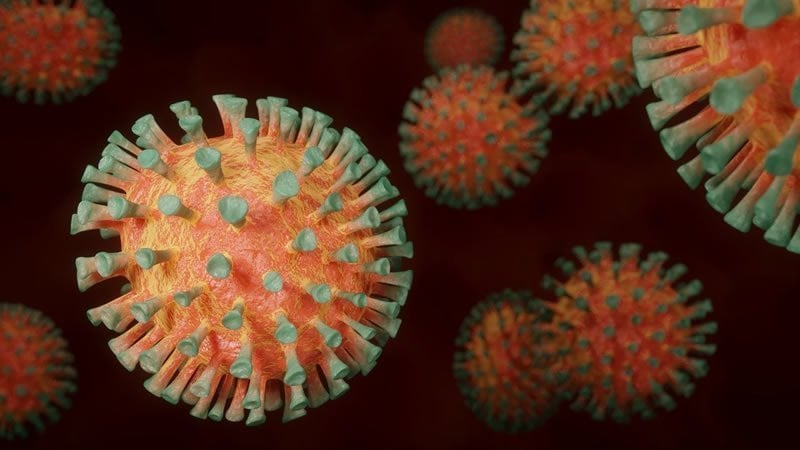Summary: COVID-19 was found in sputum up to 39 days and feces up to 13 days after pharyngeal swabs were negative in recovered patients.
Source: American College of Physicians
Clinicians from the Institute of Infectious Diseases at Beijing Ditan Hospital, Capital Medical University found that some patients had positive real-time fluorescence polymerase chain reaction (RT-PCR) test results for SARS-CoV-2 in the sputum or feces after the pharyngeal swabs became negative. Pharyngeal swabs are widely used to determine the appropriateness for a patient’s discharge from the hospital and/or whether isolation continues to be required. These findings raise concerns over whether patients with negative pharyngeal swabs are truly virus-free or if sampling of additional body sites might be needed.
The clinicians retrospectively identified a convenience sample of patients admitted to Beijing Ditan Hospital, Capital Medical University with a diagnosis of COVID-19 and paired RT-PCR testing of pharyngeal swabs with either sputum or feces. Among 133 patients admitted with COVID-19 from January 20 to February 27, 2020, the authors identified 22 with an initial or follow-up positive sputum or fecal samples paired with a follow-up negative pharyngeal sample. RT-PCR positive for SARS-CoV2 of sputum and feces was seen up to 39 and 13 days, respectively, after the obtained pharyngeal samples were negative.

The researchers caution that the study was not carried out in a systematic fashion with sampling of all patients in a protocolized manner, and it is not known whether these positive sputum or fecal results indicate that the patient could still be infectious to others. However, their findings are potentially important because they suggest that more study is needed in this area.
Source:
American College of Physicians
Media Contacts:
Fujie Zhang – American College of Physicians
Image Source:
The image is in the public domain.
Original Research: Open access
“SARS-CoV-2–Positive Sputum and Feces After Conversion of Pharyngeal Samples in Patients With COVID-19”. Fujie Zhang et al.
Annals of Internal Medicine doi:10.7326/M20-0991.
Abstract
SARS-CoV-2–Positive Sputum and Feces After Conversion of Pharyngeal Samples in Patients With COVID-19
Background: The outbreak of coronavirus disease 2019 (COVID-19) has become a global public health problem. In the absence of a specific therapy or vaccine, timely diagnosis and the establishment of a sufficient isolation period for infected individuals are critical to containment efforts. Real-time quantitative fluorescence polymerase chain reaction (RT-qPCR) testing of respiratory specimens for SARS–CoV-2 RNA is currently used for case diagnosis and to guide the duration of patient isolation or hospital discharge (1). Specimens that are positive on RT-qPCR have, however, also been reported from blood (2), feces (3), and urine (4). Whether testing of multiple body sites is important when considering patient isolation has not been thoroughly studied.
Objective: To assess the results of RT-qPCR for SARS–CoV2 RNA of sputum and fecal samples from a group of patients after conversion of their pharyngeal samples from positive to negative.
Methods and Findings: We retrospectively identified a convenience sample of patients admitted to Beijing Ditan Hospital, Capital Medical University, with a diagnosis of COVID-19 and paired RT-qPCR testing of pharyngeal swabs with either sputum or feces samples. A diagnosis of COVID-19 required at least 2 RT-qPCR–positive pharyngeal swabs, and patients underwent treatments as well as initial and follow-up testing of pharyngeal, sputum, or fecal samples at the discretion of treating clinicians. Hospital discharge required meeting 4 criteria: afebrile for more than 3 days, resolution of respiratory symptoms, substantial improvement of chest computed tomographic findings, and 2 consecutive negative RT-qPCR tests for SARS–CoV2 in respiratory samples obtained at least 24 hours apart (1). We report the findings of patients with at least 1 initial or follow-up RT-qPCR positive sputum or fecal sample obtained within 24 hours of a follow-up negative RT-qPCR pharyngeal sample. The RT-qPCR assay targeted the open reading frame 1ab (ORF1ab) region and nucleoprotein (N) gene with a negative control. A cycle threshold value of 37 or less was interpreted as positive for SARS–CoV-2, according to Chinese national guidelines.
Among 133 patients admitted with COVID-19 from 20 January to 27 February 2020, we identified 22 with an initial or follow-up positive sputum or fecal samples paired with a follow-up negative pharyngeal sample. Of these patients, 18 were aged 15 to 65 years, and 4 were children; 14 were male; and 11 had a history of either travel to or exposure to an individual returning from Hubei Province in the past month. Fever was the most common initial onset symptom. Five patients had at least 1 preexisting medical condition. All patients met criteria and were discharged from the hospital.
We collected 545 specimens from 22 patients, including 209 pharyngeal swabs, 262 sputum samples, and 74 feces samples (Figure). In these patients, sputum and feces remained positive for SARS–CoV2 on RT-qPCR up to 39 and 13 days, respectively, after the obtained pharyngeal samples were negative.







